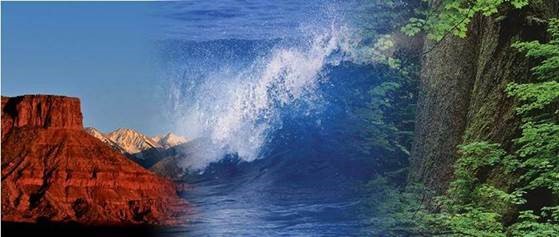
Faculty Publications
Document Type
Article
Abstract
Serpentinization-influenced hydrothermal systems, such as the Lost City Hydrothermal Field (LCHF), are considered as potential sites for the origin of life. Despite an abundance of reducing power in this system (H2 and CH4), microbial habitability may be limited by high pH, elevated temperatures, and/or low concentrations of bioavailable carbon. At the LCHF, the relative contribution of biotic and abiotic processes to the vent fluid composition, especially in the lower temperature vents, remain poorly constrained. We present fluid chemistry and isotope data that suggest that all LCHF fluids are derived from a single endmember produced in the hotter, deeper subsurface essentially in the absence of microbial activity. The strontium isotope composition (87Sr/86Sr) of this fluid records the influence of underlying mantle and/or gabbroic rocks, whereas sulfur isotope composition indicates closed-system thermochemical sulfate reduction. Conductive cooling and transport is accompanied by continued sulfate reduction, likely microbial, and mixing with unaltered seawater, which produce second-order vents characterized by higher δ34Ssulfide and lower δ34Ssulfate values. Third-order vent fluids are produced by varying degrees of subsurface mixing between the first- and second-order fluids and a seawater-dominated fluid. Additional biotic and abiotic processes along different flow paths are needed to explain the spatial variability among the vents. Relationships between sulfur geochemistry and hydrogen concentrations dominantly reflect variations in temperature and/or distance from the primary outflow path. Methane concentrations are constant across the field which point to an origin independent of flow path and venting temperature. At Lost City, not all vent fluids appear to have zero Mg concentrations. Thus, we propose an extrapolation to a Sr isotope-endmember composition as an alternative method to estimate endmember fluid compositions at least in similar systems where a two-component mixing with respect to Sr isotopes between seawater and endmember fluids can be established.
Digital Object Identifier (DOI)
Publication Info
Published in Geochimica et Cosmochimica Acta, Volume 332, 2022, pages 239-262.
Rights
© 2022 The Author(s). Published by Elsevier Ltd. This is an open access article under the CC BY license (http://creativecommons.org/licenses/by/4.0/).
APA Citation
Aquino, K. A., Früh-Green, G. L., Rickli, J., Bernasconi, S. M., Lang, S. Q., Lilley, M. D., & Butterfield, D. A. (2022). Multi-stage evolution of the Lost City hydrothermal vent fluids. Geochimica et Cosmochimica Acta, 332, 239–262. https://doi.org/10.1016/j.gca.2022.06.027

